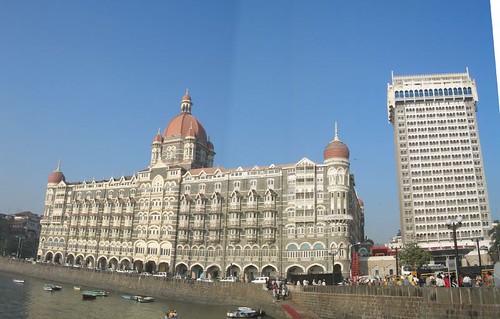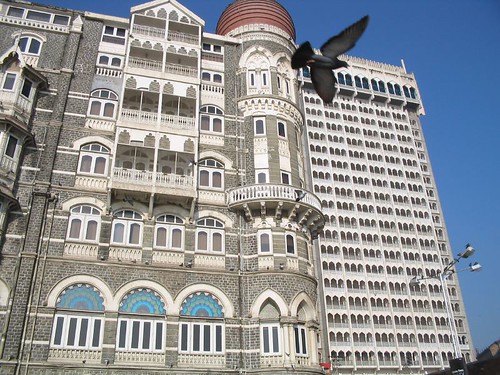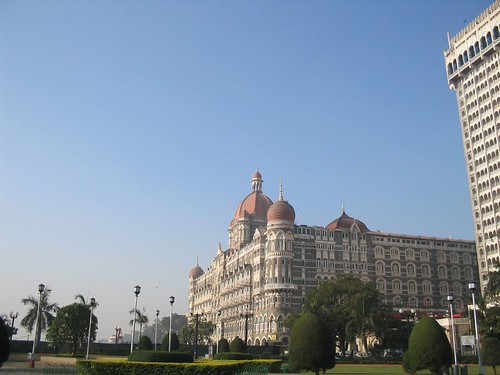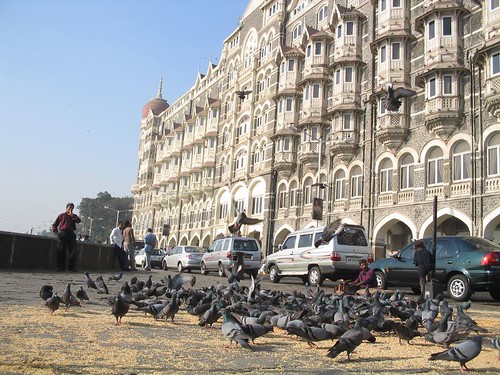If you visit the Tata group web site (link to page) you can read some interesting facts and trivia about the Taj Palace and Tower hotel.
- The foundation of the Taj Mahal, laid in 1898, is 40 feet deep.
- The hotel was built at a cost of more than Rs 4 crore.
- It was the first building in Bombay to be lit by electricity.
- A suite of rooms, including full board, cost the princely sum of Rs 30.
- It preceded the famous Gateway of India by over 20 years. Until then the hotel was the first sight for ships calling at the Bombay port.
- An early report describes the horror of a receptionist looking up to see a monarch march in, followed by his pet tiger on a chain.
- Jamsetji Tata had visited the famous Paris exhibition at the turn of the century (for which the Eiffel Tower was built). He saw there pillars of spun iron displayed for the first time, and ordered 10 to be shipped home for his new hotel. Today they seem indestructible as they continue to hold up the hotel's famous ballroom.
- The Taj had Mumbai's first-ever licensed bar, the Harbour Bar (bar licence No 1), India's first all-day dining restaurant, and the country's first international discotheque, Blow Up.
- In 1947, independent India's first speech to industry was made at the hotel.
As you can see below, the building on the left is the old Taj building, now called the Taj Palace, while the hotel on the right is called the Taj Towers. In the late 1800s, Jamsetji Tata took a foreign guest to dinner at a hotel in Bombay. The doorman told him, his guest was allowed but not him as the hotel was "only for Europeans". As things stand today, that 'for Europeans only' hotel does not exist, while the Taj hotel in Bombay is one of the finest hotels in the world.
Wikipedia has a short but useful writeup of the Gatway of India (link to article on Wikipedia): The Gateway of India was built to commemorate the visit of King George V and Queen Mary to Bombay, prior to the Darbar in Delhi in December 1911. The foundation stone was laid on March 31, 1911 by the Governor of Bombay, with George Wittet's final design sanctioned in August 1914. Between 1915 and 1919 work proceeded on reclamations at Apollo Bunder for the land on which the gateway and the new sea wall would be built. The foundations were completed in 1920, and construction was finished in 1924. The Gateway was opened on December 4, 1924 by the Viceroy, the Earl of Reading.
The last British troops to leave India, the First Battalion of the Somerset Light Infantry, passed through the gate in a ceremony on February 28, 1948. 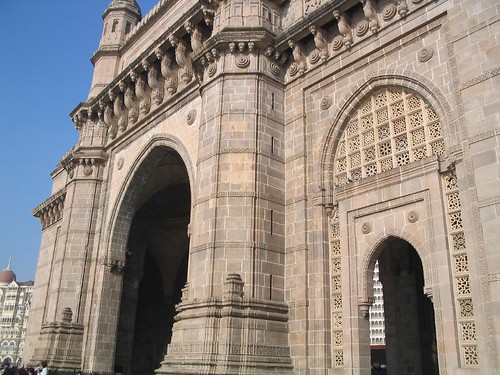
Cross-posted (link to post) on my personal blog (link to blog)
